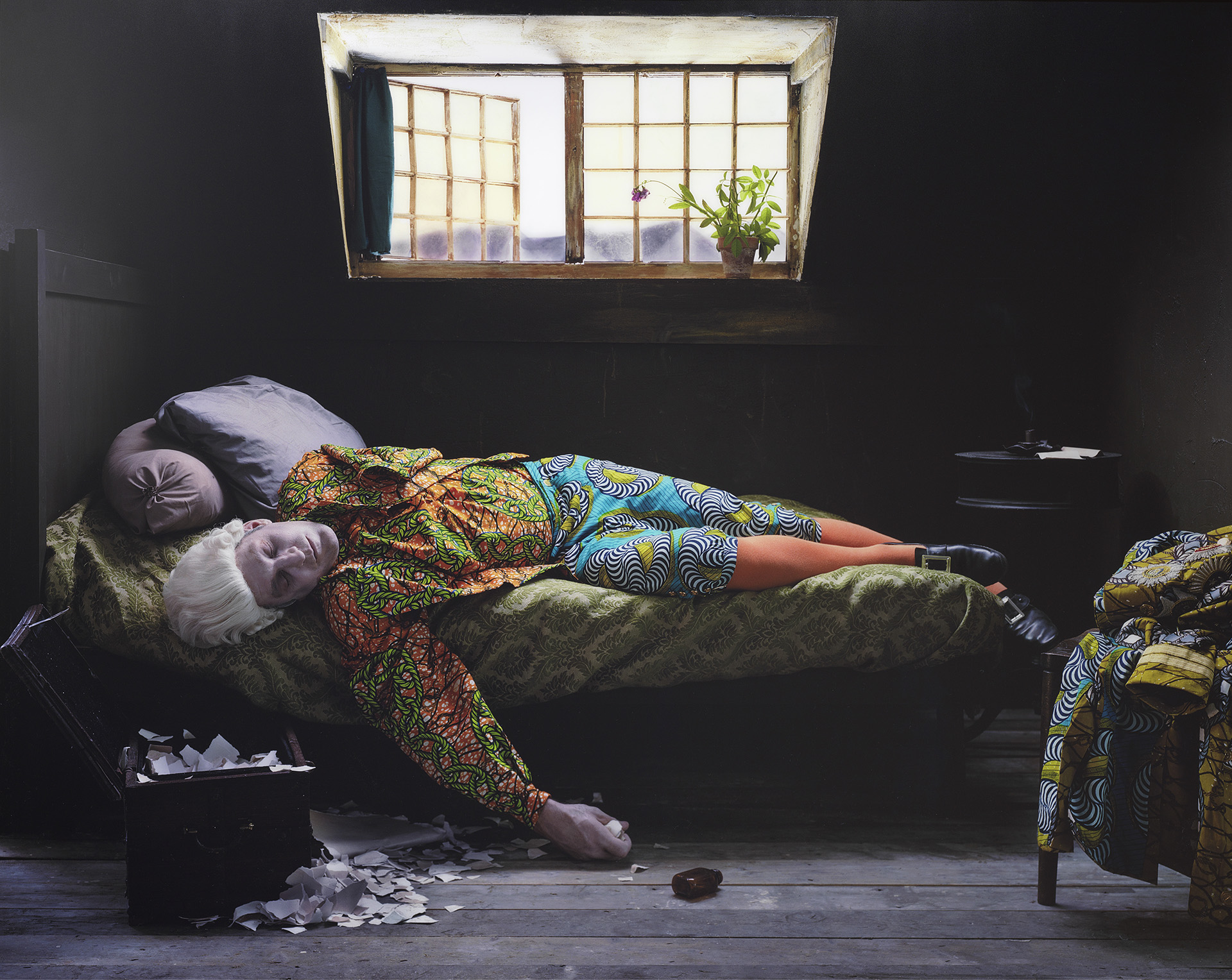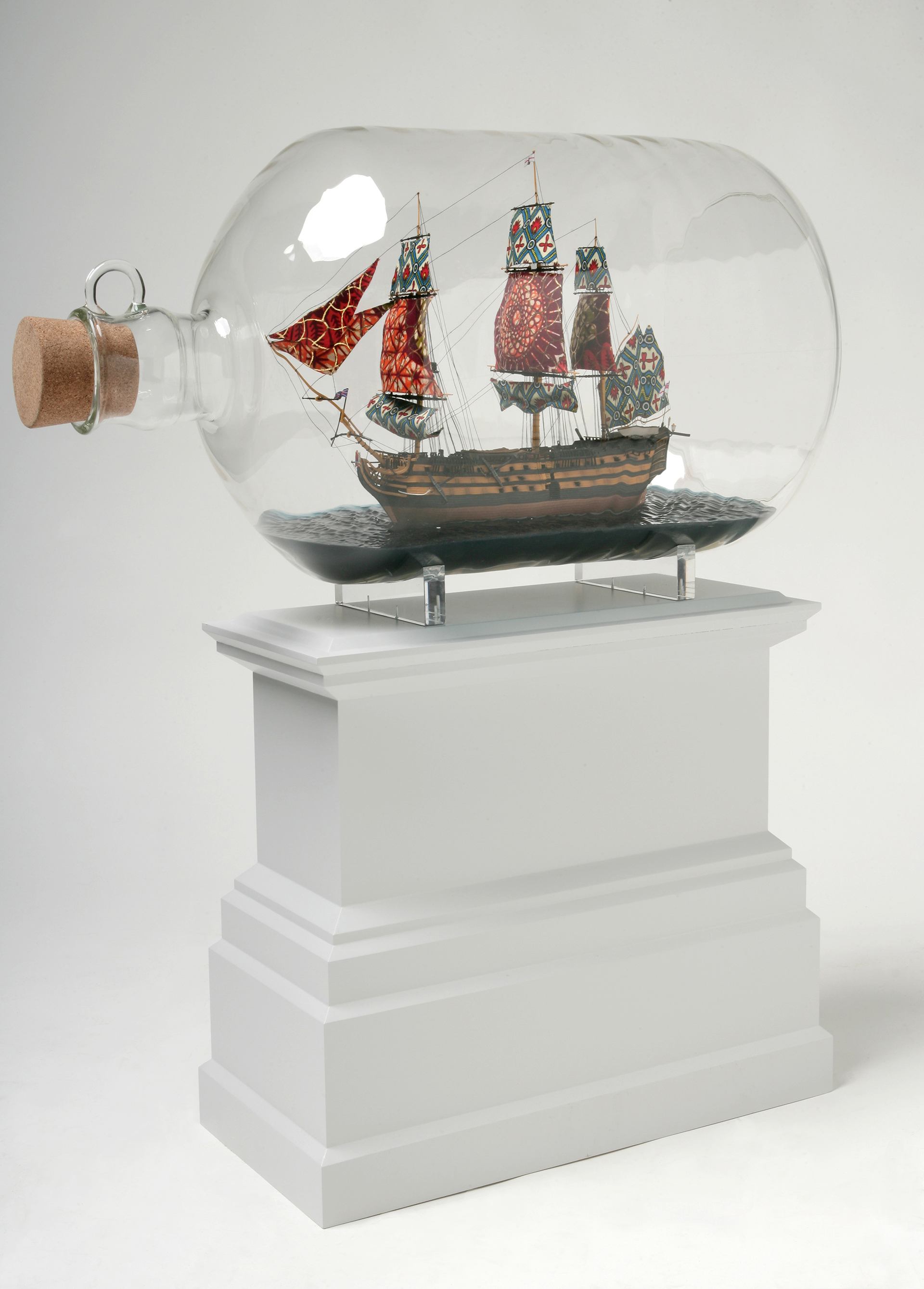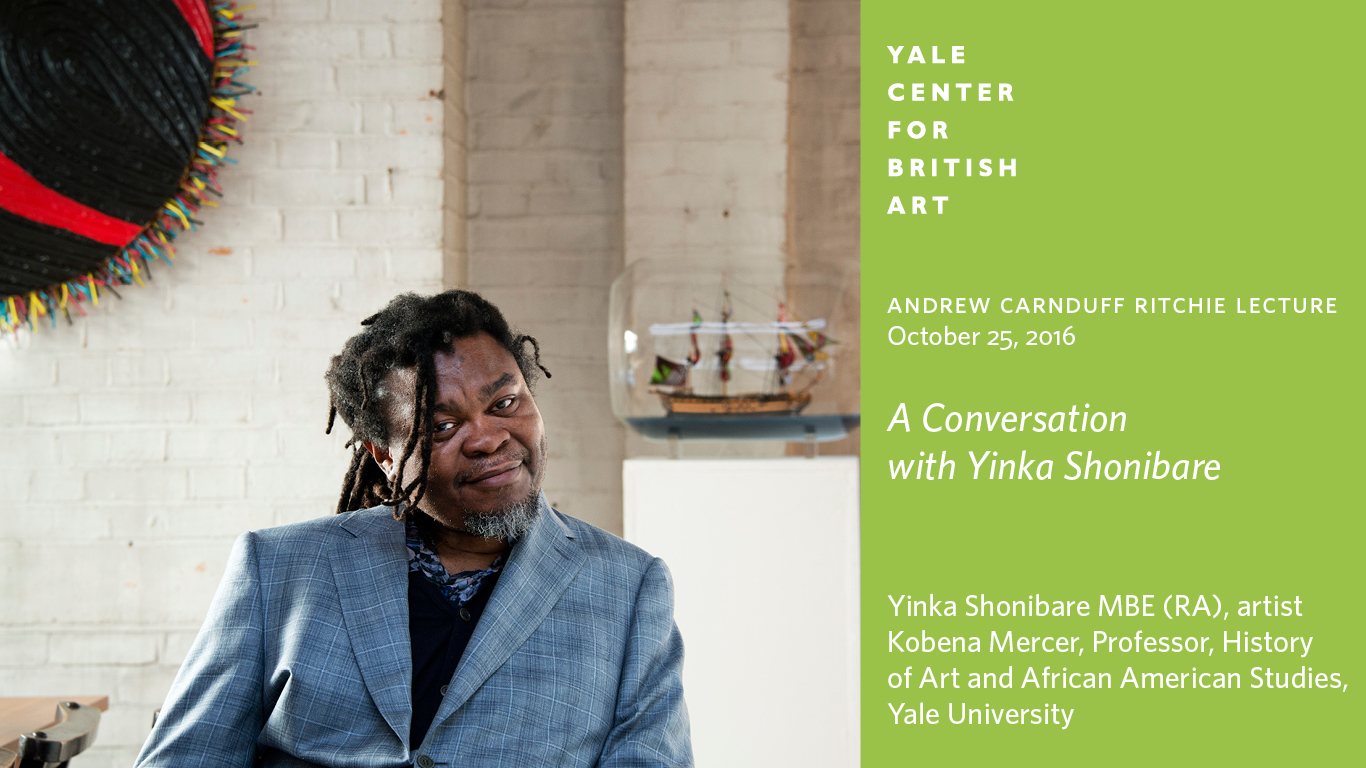The Center presented a display of works by the British Nigerian artist Yinka Shonibare MBE (RA), which coincided with the exhibition Spreading Canvas: Eighteenth-Century British Marine Painting (September 15–December 4, 2016) and highlighted areas of Shonibare’s practice that reflected a similar investment in diverse media and British maritime history. Bringing together photography, costume, sculpture, and film, the Center’s display introduced audiences to the breadth of Shonibare’s work, while focusing on a single theme: the life, death, and legacy of Admiral Lord Nelson, whom the artist uses as an emblem of Britain’s imperial past. Each of the seven works on view, and the three film installations that were screened throughout the fall of 2016, incorporated references to the colorful, wax-printed cotton fabrics that have become Shonibare’s signature material. Associated with Africa but originating in Indonesia and Holland, the fabrics are the product of global trade and imperial markets, thus summing up the themes at the heart of Shonibare’s work.
The display featured Nelson’s Ship in a Bottle (maquette), which marked the beginning of Shonibare’s exploration of Nelson’s image. Commissioned for the “Fourth Plinth” series, it was unveiled in 2010 in Trafalgar Square. Shonibare was the first black artist invited to produce a work for this series. His was also the first work to engage directly with the history of the square, which commemorates Britain’s naval victory at the Battle of Trafalgar. Captured within a gigantic glass bottle, Nelson’s Ship in a Bottle is a representation of HMS Victory, Nelson’s famous flagship at the Battle of Trafalgar, the campaign in which the admiral heroically lost his life. Shonibare’s model ship accurately replicates HMS Victory, but its thirty-seven sails are made from his signature Dutch wax fabrics.
Nelson’s Ship in a Bottle was contextualized with a number of related works, including a screening of Addio del Passato (2011). This layered video piece presents the final aria from Verdi’s La Traviata, reimagined as a performance sung by Nelson’s estranged wife, Fanny, played by the black British opera singer Nadine Benjamin. The costumes worn by Fanny and Nelson in the film are exhibited in glass cabinets and juxtaposed with three framed digital chromogenic prints drawn from Shonibare’s series of Fake Death Pictures (2011). The photographs extend Shonibare’s exploration of Nelson. Each is based on paintings depicting deaths and suicides, and each thereby depicts a different death scenario for Nelson. One of the photographs is based on Henry Wallis’s famous painting The Death of Chatterton (1856), an icon of the Pre-Raphaelite movement. The Center owns an oil-on-panel study for this work, which was also on view alongside other historical paintings in the Center’s collection that represented or alluded to the Battle of Trafalgar and Nelson’s apotheosis.
Further extending the representation of this major theme in British art, Yinka Shonibare MBE (RA) coincided with the installation of Malcolm Morley’s Trafalgar-Waterloo (2013), a triptych commemorating Admiral Lord Nelson and the Duke of Wellington, and with a display of works on paper by black British and African American contemporary artists, curated by Gillian Forrester, Senior Curator of Prints and Drawings. The display included works from the collections by Joy Gregory, Isaac Julien, Chris Ofili, Carrie Mae Weems, and Shonibare, as well as works by Lynette Yiadom-Boakye on loan from the artist.
Exhibition brochure
Download the illustrated booklet that accompanied this exhibition, which includes descriptive text and a list of works that were on display.
View works from the collection included in this exhibition here.
Credits
Yinka Shonibare MBE (RA) was curated by Martina Droth, Deputy Director of Research and Curator of Sculpture, Yale Center for British Art.






